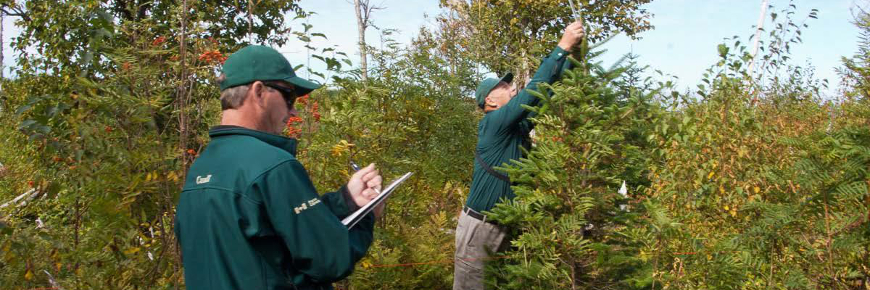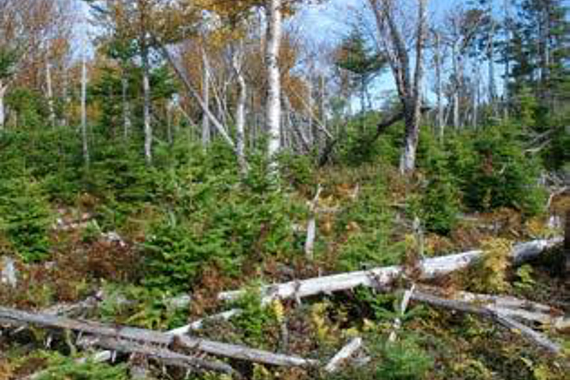
Parks Canada staff conduct vegetation surveys within an area fenced off from moose to assess tree growth and the health of forests. Photo: © Sheldon Stone
Controlling a hungry herbivore
Reducing moose populations to regrow forests in Gros Morne National Park
What’s the issue?

Moose were introduced to Newfoundland a century ago. With lots of food, few predators and little disease, the numbers of this hungry herbivore increased spectacularly – especially in Gros Morne National Park, where densities of moose in the lowland forests are five to 20 times higher than in other parts of Canada. Their intense browsing has had extreme effects in Gros Morne. About 65 square kilometres of once-healthy forest have turned into treeless meadows, and 75 percent of the forests that should be regenerating no longer are; young trees are absent or are smothered out by fast-growing weedy plants. Forest biodiversity is also declining and forest-dependent species are losing habitat. Early efforts to control moose populations in the park were successful (2011–2014), but we now know that for forests to properly regenerate in western Newfoundland, their population numbers need to be reduced further still.
What’s our approach?
- Building on the success of the first moose reduction program, harvest additional moose so the population is two moose per square kilometre of habitat.
- Monitor the regeneration of understory regrowth and browse by moose.
- Communicate often and broadly, using multiple formats and venues, to share the importance of the restoration program to Canadians and visitors.
What’s been accomplished?
- In partnership with volunteer moose hunters, reduced the moose population to approximately 2,000 animals in 2017 (two moose per square kilometre).
- Reversed long-term declines observed in the forest ecosystem; improved the ecosystem status by increasing balsam fir growth, sapling and shrub numbers, and understory biodiversity.
- Supported Indigenous and not-for-profit organizations by providing access to moose meat for community freezers and fundraising efforts.
- Included forest health and forest restoration messages in communications with Canadians, visitors and area residents through interpretive activities, park trails, school programs and online presentations.
- Date modified :